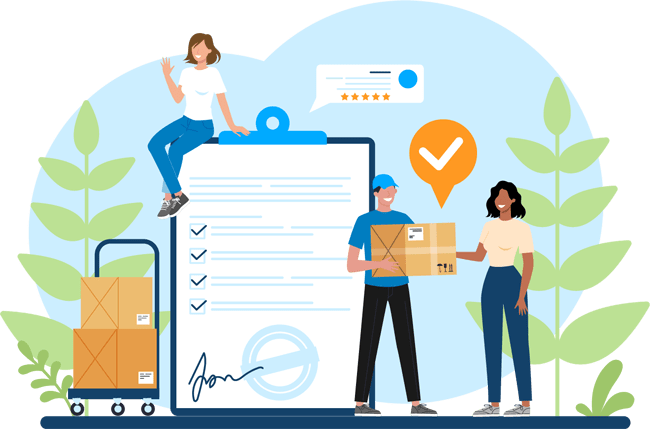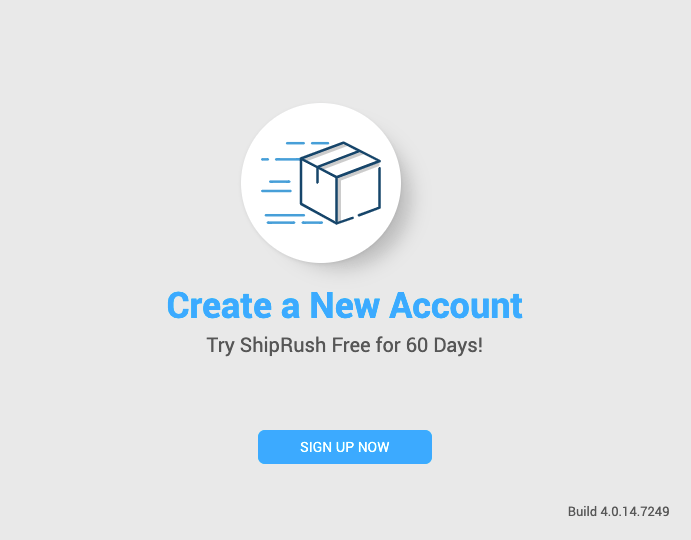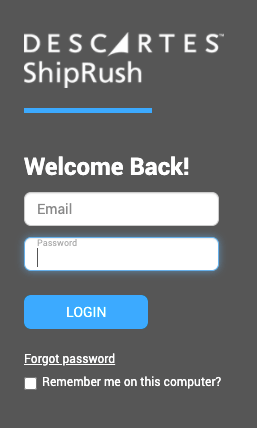
World events significantly influence the buying behaviors of consumers. As current events, such as the war between Russia and Ukraine, combine with ripples from the past few years’ global COVID-19 pandemic, a disturbing pattern of macroeconomic threats emerges. These factors affect consumers’ values and priorities when shopping online, and those shifts, in turn, affect your ecommerce business.
To understand the most pressing issues affecting ecommerce customers’ buying behavior, Descartes Systems Group recently conducted a consumer sentiment study entitled “Dear Consumer: How Do You Feel About Home Delivery Now?” (The Descartes Systems Group, Inc., 2023). Our ecommerce business experts analyzed the results of this study to determine what ecommerce shoppers need today and how you can overcome threats to your ecommerce business.
Which Economic Threats Currently Impact Consumer Spending?

Slower Economic Growth and Cautious Consumers
In the wake of the COVID-19 pandemic, global markets continue to experience a dip in economic growth. According to the International Monetary Fund’s Global Economic Outlook, “Global growth is projected to fall from an estimated 3.4 percent in 2022 to 2.9 percent in 2023, then rise to 3.1 percent in 2024. The forecast for 2023 is 0.2 percentage points higher than predicted in the October 2022 World Economic Outlook (WEO) but below the historical (2000–19) average of 3.8 percent.”
This trend varies from country to country, with some experiencing healthy growth and others declining. For example, the United States shows a healthy growth trend post-COVID, while the United Kingdom and Europe continue struggling due to high energy costs and other factors.
How is ecommerce buying behavior affected by slower economic growth?
A fall in economic growth means everyone, including your consumers, is more cautious and holds their purse strings a little tighter. During times of economic downturn, people are less optimistic and more protective of their purchases amidst financial worries. This year, Descartes’ Ecommerce Consumer Sentiment Study states: “Security was the most important element of the home delivery process” to ecommerce consumers surveyed worldwide.

Rising Cost of Goods and Budget-Conscious Consumers
Another ripple from the global pandemic and the war between Russia and Ukraine is high inflation, and many countries are struggling to control the rising cost of goods. The economic threat of high inflation remains a persistent problem worldwide. While many countries’ inflation rates have peaked, rates and cost of goods remain high.
In the United States, we see that the Consumer Price Index’s rate of growth peaked in June 2022, though it currently remains high at 6.04% (Bureau of Labor Statistics, U.S. Department of Labor, 2023). In Europe, “Inflation peaked last October [2022] at 10.6% in the eurozone but has been falling since, reaching 8.5% in January” (Deutsche Welle, 2023). By the end of March 2023, annual inflation in the euro area dropped to 6.9% (European Commission, 2023).
How is ecommerce buying behavior affected by the rising cost of goods/high inflation?
High inflation means consumers have less purchasing power and must spend more money each month on essentials (Oner, 2019). This disrupts consumer finances and creates a highly budget-conscious mindset around shopping. 37% of consumer participants in Descartes’ Consumer Sentiment Study reported that having less disposable income will prevent them from increasing the number of online purchases they make in the future (The Descartes Systems Group, Inc., 2023). As consumers look for ways to maximize their budgets and cut costs, Descartes’ Ecommerce Consumer Sentiment study finds: “Preference for low-cost delivery is twice as important as delivery speed.”
Four Ways Ecommerce Businesses Can Combat Economic Threats
What can I do about slow economic growth and high inflation affecting my business?
Global events may be outside your control, but you can still take practical steps to protect your business. The most impactful thing you can do is keep your existing customers happy and increase their sense of security. When people face stressful circumstances, they often default to normal buying behaviors rather than trying something new. As you foster that sense of “normal,” you must reinforce your business to guard against churn.
This is the time for order fulfillment and customer service to shine. Proactively providing an excellent customer experience can increase your consumers’ feelings of security and confidence in your brand’s ability to deliver. Here are four ways your business can combat macroeconomic threats by enhancing the customer experience:

1. Take Measures to Increase Delivery Security
As previously mentioned, security was the most important element of the home delivery process for ecommerce consumers who participated in Descartes’ global study this year. Three ways you can increase delivery security are:
- Work with highly rated carriers/couriers. Consistently ship items with carriers with an excellent reputation for secure, on-time delivery. You can read customer reviews and compare ratings on sites such as Trust Pilot.
- Use a shipping insurance provider. Carrier/courier shipping insurance is often slow and difficult to fully utilize for claims. We recommend ShipRush Total Shipping Protection for delivery security and painless claims.
- Take advantage of carrier-specific services. “Signature required for delivery” and notifications from the courier for exceptions and proof-of-delivery are two services you can extend to your customers to improve security.
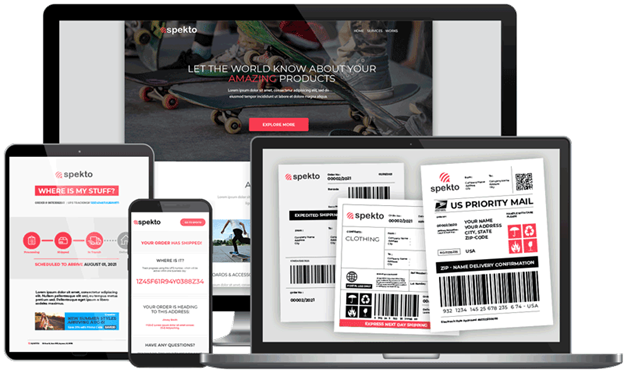
2. Boost Customer Communications
To ease fears and build trust in your brand, keep customers informed throughout the fulfillment lifecycle with branded notifications. Use software that automatically updates your customer at each stage, such as when an order has been packed, when it has left the building, and where it is along the delivery route. All these communications come straight from your brand.
- Send branded email notifications. Keep your brand in front of your customer to build trust.
- Provide branded tracking pages. Provide package status framed within your brand.
Instead of using generic carrier shipping notifications, keep your brand in front of your customer. The more they see it, the more their trust in your business will grow, especially when you provide an excellent fulfillment experience.

3. Make Live Customer Service a High Priority
“In this year’s survey, 67% of consumers indicated they had a delivery problem” (The Descartes Systems Group, Inc., 2023). During a high-stress macroeconomic situation, delivery problems are more significant for consumers. People already have less disposable income and more day-to-day issues. When delivery problems occur, navigating a digital or AI-assisted customer service channel can worsen the situation for consumers.
The best course of action is to make self-service incredibly fast and straightforward for people. However, in certain situations, they cannot get what they need fast enough with self-service. This is where live customer support comes into play.
Establish a live customer support channel to prevent churn and solve customer problems faster. Many ecommerce business leaders may be tempted to skip this step in favor of less costly options. However, in our experience, live customer support leads to greater customer satisfaction and retention. As a bonus, providing live customer support will differentiate your business from the competition and help you get ahead.
The Descartes Systems Group provides live customer support for all products and services because talking to a real person decreases stress and builds trust in the brand’s ability to solve your problem. We build a lasting relationship when customers feel like someone cares about them and their business.
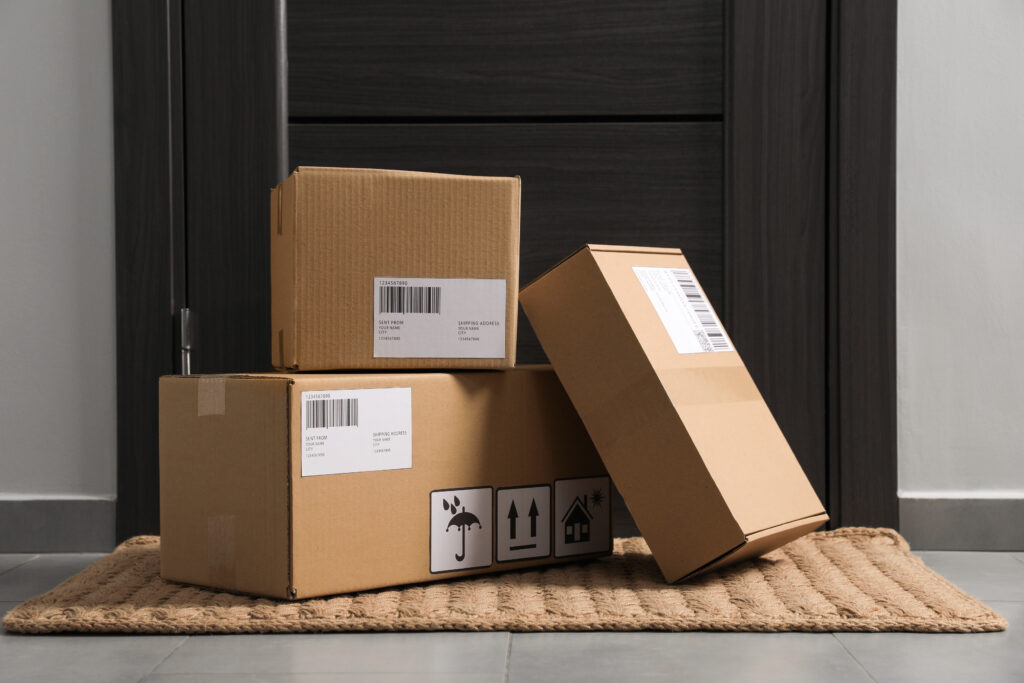
4. Offer Various Shipping Options
Consumer delivery preferences vary according to individual needs. While 39% of consumers prefer lowest-cost shipping, 22% prefer a precise delivery window, and 15% want the fastest shipping. Another 14% want both fast and precise shipping regardless of cost. The final 9% prefer environmentally friendly shipping above other factors (The Descartes Systems Group, Inc., 2023).
This diverse set of delivery preferences means your business would maximize customer satisfaction by offering various shipping options, including lowest-cost shipping. Giving consumers choices allows them to self-select delivery according to their most urgent needs. Five basic options should give them enough to choose from:
- Fastest Shipping
- Lowest-Cost Shipping
- Precise Delivery Window
- Fast and Precise Shipping
- Environmentally Friendly
How can I offer free shipping to my customers and still make money?
As an ecommerce business leader, you know free shipping is not free. Either your business or the customer always pays for it somehow. The real question is, how can you minimize shipping costs and protect your margins while offering a “free” or lowest-cost shipping option?
The best way to minimize your shipping costs is to use integrated shipping software. Here are two key ways shipping software saves you money:
- Processing orders faster and making fewer mistakes saves you money. Integrated software automates data exchange with your order sources. This reduces manual work/time and increases the accuracy of shipping and order information.
- Software providers negotiate discounted rates with carriers/couriers and pass the savings to you. Take advantage of specially discounted shipping prices to cut costs.
Choose reputable shipping software with multi-carrier rate shopping so you can automatically find the lowest rates for each order. Descartes ShipRush does this, and you can start shipping for free.
Most companies will not offer all five shipping options listed above. The most important thing is to understand and offer the options that matter most to your customers.
Control the Factors That Help Your Customers.

As an ecommerce business owner, you often encounter economic factors beyond your control. Whenever that happens, turn your attention to what you can influence: your customers’ experience with your brand. Focus on improving the factors within your business that will help your customers the most. As you show them you care, their trust in your brand will grow along with their loyalty. Ultimately, this will help your business to remain successful during difficult times.
References
Bureau of Labor Statistics, U.S. Department of Labor. (2023). The Economics Daily. Consumer Price Index up 0.4 percent over the month, 6.0 percent over the year, in February 2023. Retrieved April 5, 2023, from https://www.bls.gov/opub/ted/2023/consumer-price-index-up-0-4-percent-over-the-month-6-0-percent-over-the-year-in-february-2023.htm
The Descartes Systems Group, Inc. (2023, March). Dear Consumer: How Do You Feel About Home Delivery Now? Waterloo, Ontario, Canada.
Deutsche Welle. 2023, February 13. EU economic forecasts: Inflation past its peak, no recession. dw.com. Retrieved April 5, 2023, from https://www.dw.com/en/eu-economic-forecasts-inflation-past-its-peak-no-recession/a-64682509#:~:text=And%20what%20about%20inflation%3F,%2C%20reaching%208.5%25%20in%20January.
European Commission. (2023, March 31). Euro area annual inflation, March 2023. Eurostat | Euroindicators. Retrieved April 6, 2023, from https://ec.europa.eu/eurostat/documents/2995521/16324747/2-31032023-AP-EN.pdf/e1ba8561-cfa9-6734-3be3-e0ca47d635b6
International Monetary Fund. (2023, January 30). Inflation peaking amid low growth. IMF. Retrieved April 3, 2023, from https://www.imf.org/en/Publications/WEO/Issues/2023/01/31/world-economic-outlook-update-january-2023#:~:text=Global%20growth%20is%20projected%20to,19)%20average%20of%203.8%20percent.
Oner, C. (2019, July 30). Inflation: Prices on the rise. IMF. Retrieved April 4, 2023, from https://www.imf.org/en/Publications/fandd/issues/Series/Back-to-Basics/Inflation

